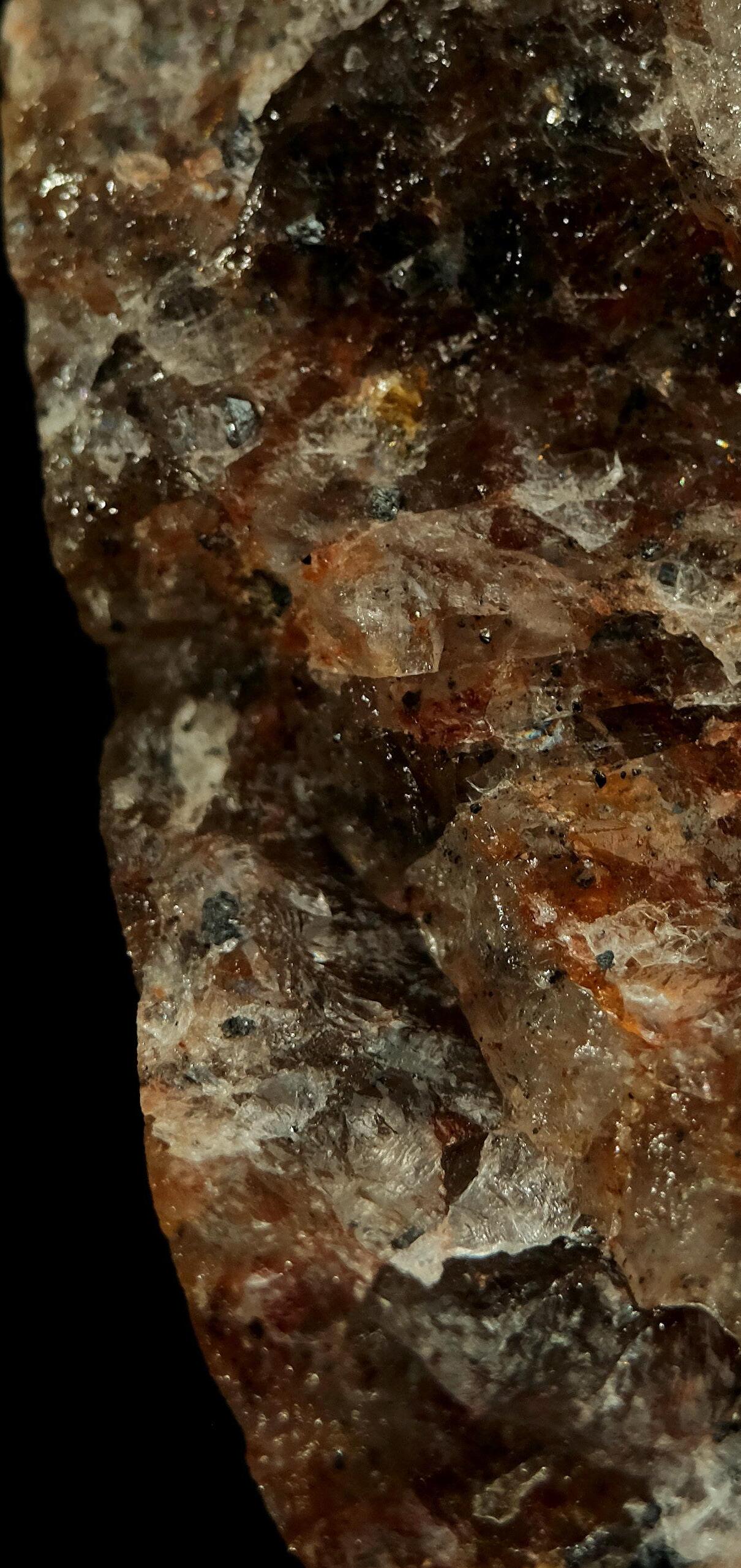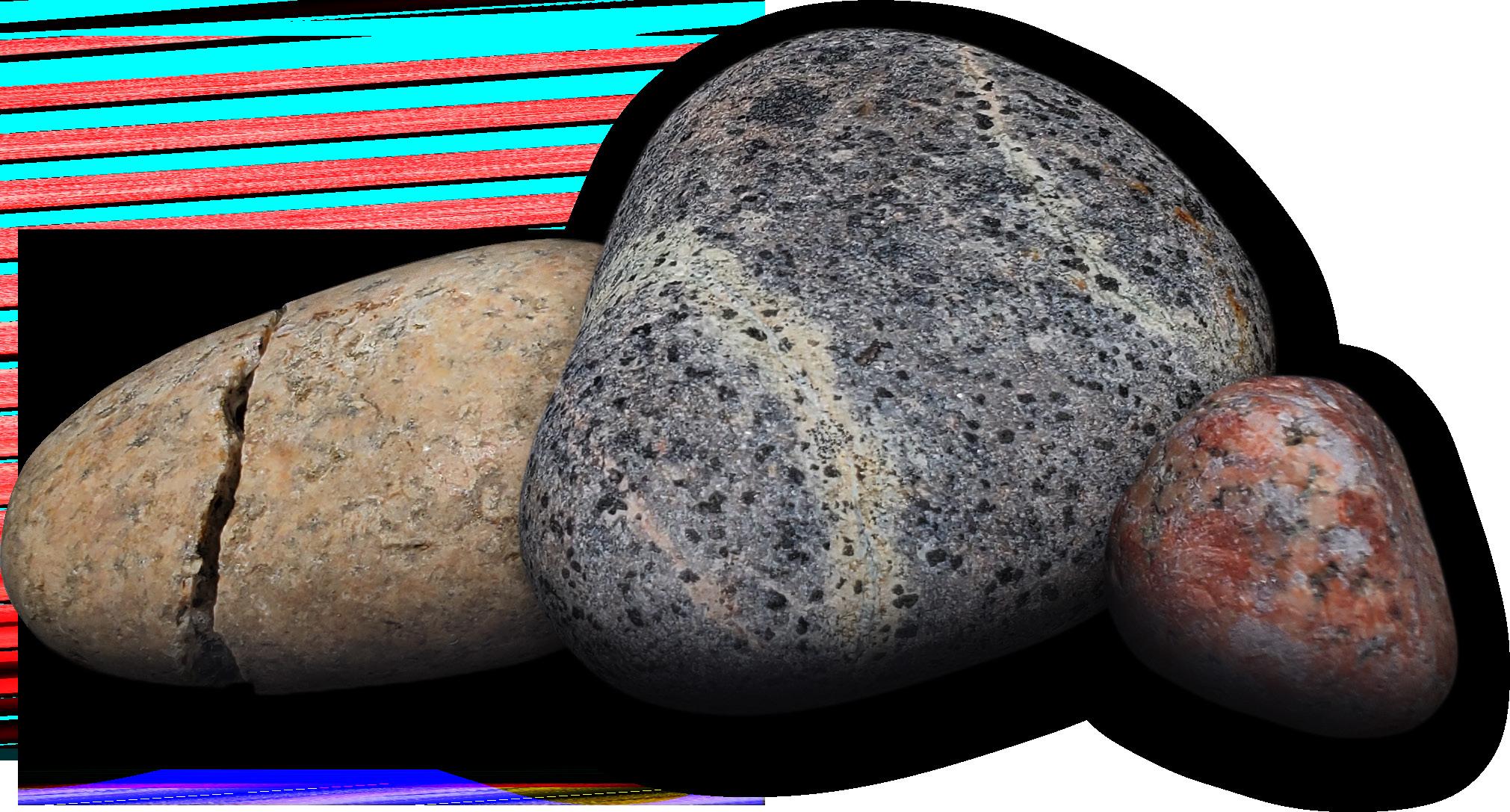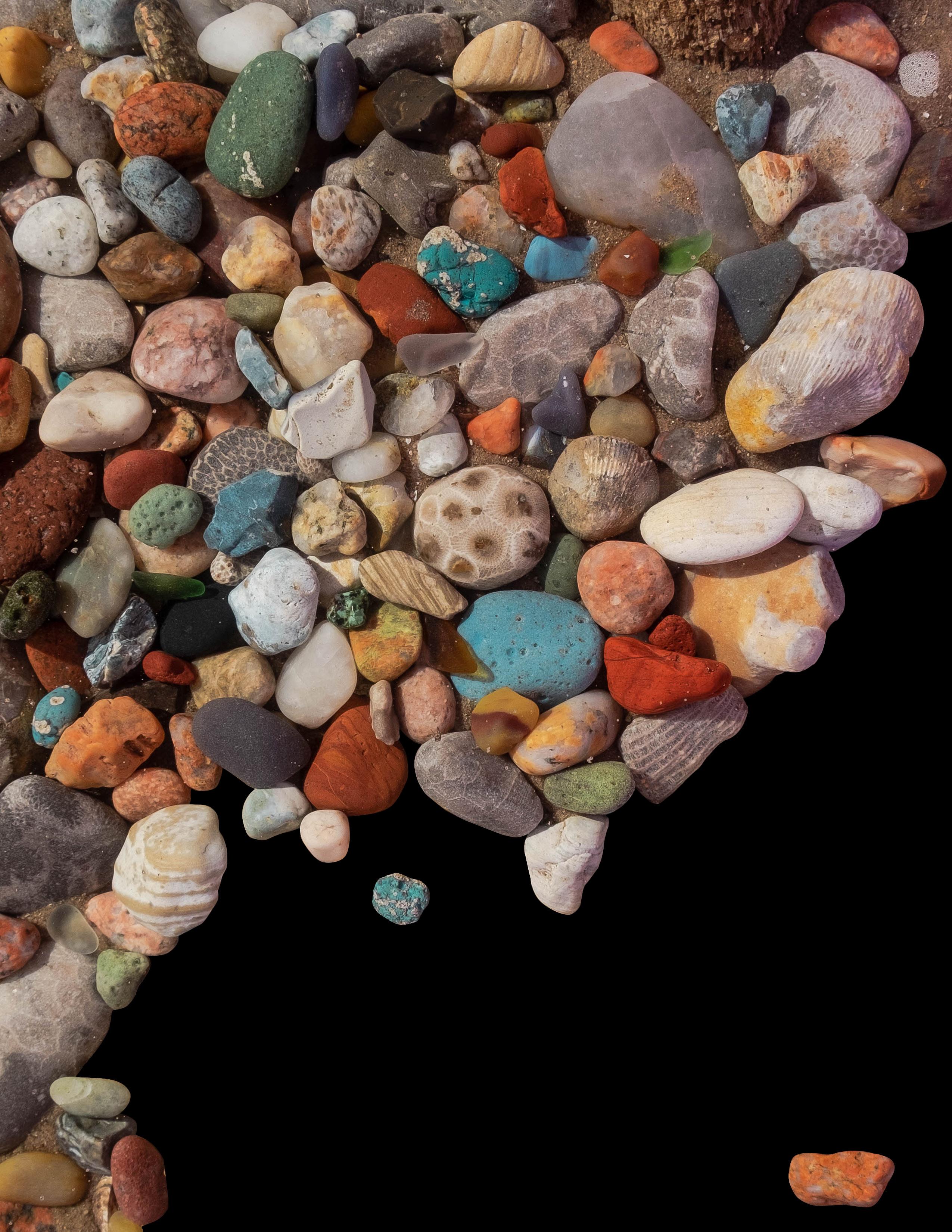
2 minute read
Deep Dive
by RockBound
By BRETT BURKETT Geologist | Writer
EvER Find ROUndEd, PEbbLEs in sTREams
Advertisement
THE LakEsHORE? Pink so pale it's almost white? Pink so bold it looks like raw salmon? These are likely chunks of gran ite brought down from Canada (the region geologists call the Canadian Shield) dur ing the last Ice Age and washed by rivers, waves, or even the glaciers themselves.
When unpolished, they often appear dull and pockmarked, their principle identifying feature being their pink coloration (the mineral potassium feldspar) and crystalline appearance. Those visible crystals may cause the rock to look splotchy- you will see distinct mineral chunks in the rock. Some will display other colors such as white (plagioclase feldspar), translucent-grayish bits that look like glass (quartz), and even dark-colored minerals— flat crystals of biotite mica or blocky crystals of hornblende. When polished, the differences in coloration are striking, potassium feldspar and biotite mica reflecting light very well, giving it its characteristic sparkle. The diverse array of colors and light effects is what makes granite a common choice for countertops, tombstones, and the facings of buildings. Often, rather than pink, white is the dominant color. These rounded granites look even duller until they are polished. The final product looks like cookies-andcream, the white and black minerals sparkling beautifully, and the glassy bits giving it an icy look.
But... Sometimes these rocks have something extra, a serious bonus for collectors.
In some cases, they’ll contain the mineral sodalite, a whitish to azure-blue mineral (Michigan's are only white) that can fluoresce— that is, glow, under an ultraviolet (UV) light! This property is even visible in dull samples. If you happen to have a portable UV light, bring one along when rockhounding! If sodalite is present, it can glow strongly orange or yellow-white. These are widely known as "Yooperlites." These aren't actually true granites, but are a closely related variety called syenite (basically, they have a different mix of quartz and feldspar).
While you can find rounded pebbles on most of Michigan's shores, they are most common across the shores of Superior. Virtually all of our granites that you find on the beaches were brought by glaciers from Canada, but in the UP there are a few isolated actual outcrops; intact exposures of granite and related rocks, most notably in Sugarloaf Mountain and near the Dead River Bridge, but also in a few roadcuts in the Republic area.
Granite
forms when magma rising through the crust fails to reach the surface to form a volcano. As it cools slowly underground over the course of tens of thousands of years, it grows large mineral crystals that give granite its characteristic look. Millions or even billions of years may pass before those rocks reach the surface to see the light of day.
Aside from collecting, why do we care about granite? Granite makes up the solid mass of the continents upon which we live. Most of what we see around us are sedimentary rocks (e.g., sandstone, limestone) or soil deposited on top of it, but dig down far enough and the main mass of the continental crust is granite. As these rocks break down over time, the glassy bits of quartz, which resist the effects of wind and rain, are loosened, tumbling down rivers, eventually creating many of our beaches. Most granites are many millions- and can be even billions- of years old. Granites of the Canadian Shield can be 2.7 to 3.6 billion years old! Since most of the granites you'll encounter on the shores of Michigan are Canadian immigrants from the last ice age, that's about how old the pieces you'll find are! What might look like a dull rock can be a truly epic find from some of the earliest days of our planet.












